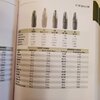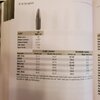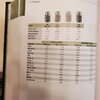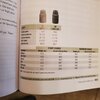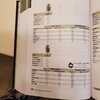Alright, it’s not apparent how this applies to my 2 specific bullets (Berry’s 158 gr FN and HP)? Am I to infer when using Unique, I’m limited to only those bullets listed on their website? Incredible!
So, looking at Alliant load data for 357 Magnum 158 grain projectile (in this case a Speer Gold Dot Hollow Point which is a jacketed PD/SD projectile), 7 grains are shown as the maximum load.
http://www.alliantpowder.com/reloaders/powderlist.aspx?type=1&powderid=3&cartridge=28
For starting load take 7.7 grains, multiply by 0.9, the result is 6.9 grains for the 158 grain Speer Gold Dot jacketed bullet, keeping two significant figures.
Now if we look at the Speer #14 data I posted, looking specifically at data for 158 grain non-jacketed bullets (in this case a LSWC & LSWC HP) and Unique powder, the published start load is 5.5 grains for 970 feet per second muzzle velocity from a 6" barrel and max load data is 6.0 grains Alliant Unique with 1034 fps muzzle velocity from a 6" barrel.
Going a few pages further Speer's data for 158 grain jacketed bullets (including the Gold Dot Hollow Point as well as two Uni-Cor bullets and one TMJ bullet) and Alliant Unique powder, the published start load is 6.9 grains with a published muzzle velocity of 978 fps from a 6" barrel and max load is 7.7 grains with a published muzzle velocity of 1040 fps.
So Alliant's published data for using Alliant Unique for the 158 grain .357 Gold Dot Hollow Point agrees with Speer's published data for not only the 158 grain .357 Gold Dot Hollow Point but three other 158 grain .357 jacketed bullets. Start load = 6.9 grains, max load 7.7 grains.
Speer's published load data using Alliant Unique for 158 grain .357 non-jacketed bullets is significantly different than for jacketed bullets with a start load of 5.5 grains and a max load of 6.0 grains accompanied by lower published muzzle velocities.
I believe if you look in the Speer Reloading Manual #12 you'll discover similar if not identical data as the Speer Reloading Manual #14.
ETA - The data on page 518 of Speer Reloading Manual #12 shows the same data for 158 grain .357 non-jacketed bullets WRT start load is 5.5 grains Alliant Unique and max load is 6.0 grains Alliant Unique.
The data on page 520 of Speer Reloading Manual #12 shows the same data for 158 grain .357 jacketed bullets WRT start load is 6.9 grains Alliant Unique and max load is 7.7 grains Alliant Unique.


